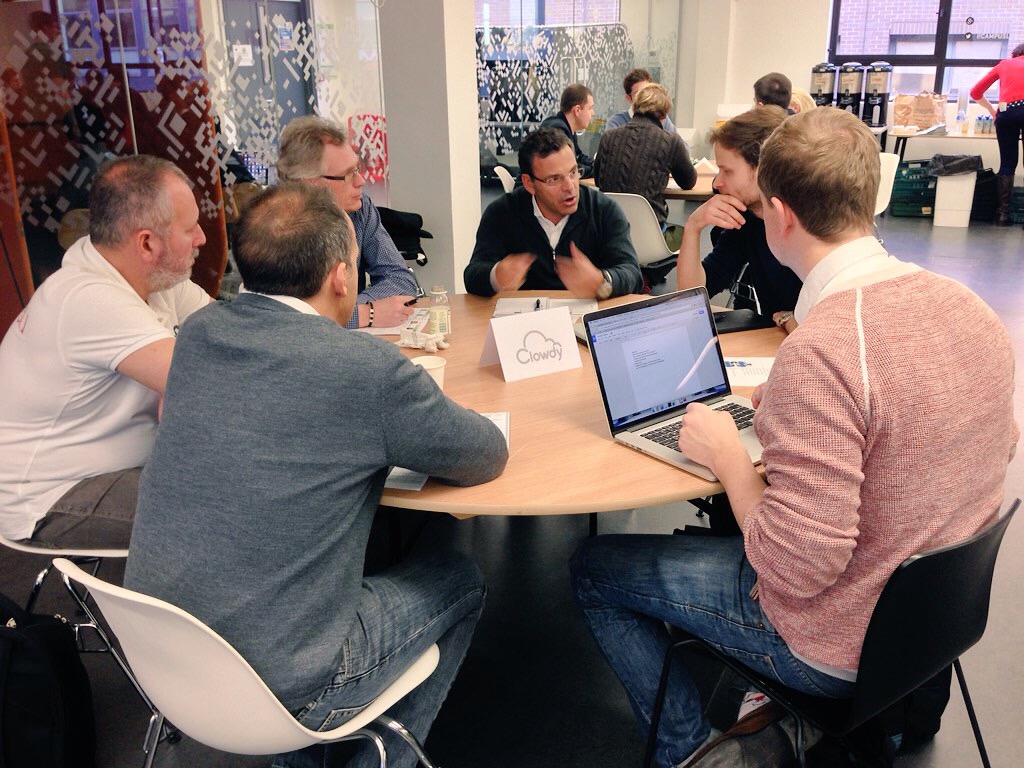Editor’s note: Stuart Logan is CEO and founder of UK start-up Clowdy, a platform connecting the creative industries. He and his company participated in Seedcamp Week in February 2015 and are now part of Seedcamp.
Everyone is familiar with Y Combinator and TechStars, but not as many people know about Seedcamp. It is arguably the most prominent startup acceleration program in Europe and it has helped some of the world’s top startups get off the ground, including TransferWise, GrabCAD FrontBack and Editd.
Seedcamp is held twice a year and there are 20 startups selected to take part in a weeklong series of activities to help startups grow. Each Seedcamp round includes a multitude of investment options and counsel from several highly regarded mentors, including Fred Wilson from Union Square Ventures (USV) and Richard Moross of Moo.
We were one of the 20 lucky startups selected in this spring’s program and here’s how we got there.
Start with the problem you’re trying to solve
When our company started out, we believed we were solving the problem of consumers wanting all types of content in one place. We were wrong. This wasn’t a big enough pain point. While we could have done without spending time and money pushing out more than a thousand pieces of content and doing an unsuccessful crowdfunding campaign, it was helpful in our search to finding out what the key problem was that our company was solving.
It became crystal clear after doing some qualitative interviews with our key demographic – creatives. As soon as we identified the problem, our pitch became so much easier.

Hone your story
We’ve been through a lot since starting up, trying to solve one problem and then pivoting (I hate that word) to solve another. Long before this, there is history about why I even started the company in the first place.
I’ve always been into computers and I’ve always loved music. I was five years old when my older brother introduced me to the Sinclair Spectrum. I learned about programming, and I loved it. My passion grew deeper for programing in high school and I made a music website. This was pre-dot-com crash so I tried to emulate a music marketplace. It was a roaring success – it got 85 visitors.
When I decided to go to university, there was only one choice for me: computer science. I funded my education by building websites and continued that business after I graduated.
This was my story. It took me years to develop it, but it was clear as day when I shared it with the accelerator’s organizers. It resonated with them. They could tell this wasn’t just something I came up with last week. This company was years in the making, and being accepted by the accelerator was the culmination of bringing all that passion and hard work together.
You could say startups that get accepted into accelerators are lucky. In truth, you make your own luck with a bit of planning and a load of hard work.
A multi-dimensional approach
Sign up to an accelerator via its web form, click send, and hope for the best: That gets you accepted, right? Maybe, but it’s risky.
We took a slightly more strategic route, because we didn’t want to put in to chance. We devised a plan early on that helped us build momentum and connections leading up to the accelerator.
First, we attended Web Summit Dublin. We researched investors and honed the pitch that we delivered to hundreds of people over the conference — one of whom was Seedcamp’s co-founder, Carlos Eduardo Espinal. We started building a relationship with Seedcamp, and I learned more about pitching our company in one day than I had done in the previous 18 months of its existence.
Another part of our plan was pitching to VCs, which we did last year. We were too early for them, but they told us about the Seedcamp event and said we should apply. We did, the VC put in a good word for us and we were accepted. I’ve since been told that this validation from an external source really helped with our admission. Damien (my co-founder) and myself pitched to Dave Haynes (ex-SoundCloud) on the call, and the scheduled 15-minute call turned into 40 minutes. Our story resonated.
And finally, we generated awareness. PR is hard, but we put ourselves on the map with coverage in publications. An example is the article written on TechCrunch. I replied to a tweet by Steve O’Hear looking for pitches from European-based startups. I emailed him instantly with an update on the company, what we had just released and why he should write about us.
Be lucky
I’ll always remember speaking to a good friend a decade ago, saying he was “lucky.” He founded a hosting company when he was 15 and went on to start many other companies over the following decade-and-a-half. I always envied his success. Over and over again he seemed to meet the right person at the right time, or made the right business decisions that went viral. It was incredible. How could someone get so many aces time after time?
In truth, it wasn’t down to luck. He is one of the hardest workers I know and is quite obsessive when he’s passionate about an idea. This is the reason all this luck has happened. His tenacity and endeavour.
You could say startups that get accepted into accelerators are lucky. In truth, you make your own luck with a bit of planning and a load of hard work.
